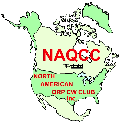
 | NAQCC News |
| August 11, 2012 | NAQCC Web Site | Issue #170 | |
|---|---|---|---|
|
In this issue: 1. August Sprint 1a. July Sprint Results 2. July Challenge Results 2a. September Challenge 2b. Current Challenge 3. General Club News 4. Chapter News 5. NAQCC QRS Nets 6. CW Assistance Project 7. CW Cartoon of the Month 8. Recent Awards Issued 9. Member Spotlight 10. News Items and Articles by Our Members |
| 1. AUGUST SPRINT: - Our August sprint is close at hand. We hope to see you there this coming Tuesday evening, August 14 at 8:30 EDT or converting to the more common date and time used around the World in ham radio, that's Wednesday, August 15 at 0030Z. As always it's two hours long ending at 0230Z. As we're proud to say in honor of our great NAQCC members, we've had over 100 logs submitted in every sprint except two since April 2010. That's a mark achieved by few other, if any, ham radio clubs. There are many reasons for our success. Of course first of all it's the dedication of our members to our club. We think it is also due to the friendly nature of our sprints. They're not a slam bang fight to make more QSOs than anyone else like so many contests and sprints. That's not our objective. We want our members to get in the sprints to have fun, and put scoring way down on the list of priorities. Another factor is the way we handle logs, insisting that complete logs be submitted, not just how many QSOs were made - and that those logs be carefully cross-checked to ensure they are as close to 100% accurate as possible. Finally, input from participants seems to indicate that striving for GOLDEN LOG status is another incentive. Of course a GOLDEN LOG is one that is perfect in every way. Generally about 40% of the submitted logs are GOLDEN each sprint. If you are new to the sprints, please read the complete sprint rules carefully so you'll know exactly what we need in the form of logs. While it is not necessary to use a computer program for your sprint logging, if you do use our recommended GenLog program correctly, then submit via the autologger, it will take you the least amount of time to compile and submit your log and report. Just a few minutes in most cases. If you have any doubts about using GenLog, check out our illustrated tutorial on using the program. I've also created a 'check list' or 'tutorial' on how you can be almost guaranteed to have a GOLDEN LOG. This supplements the info in the Sprint General Rules. Check it out here if you haven't been getting a GOLDEN LOG lately. Maybe you'll see where you've been going wrong. There is a plain text file (one for each continental USA time zone) of upcoming sprint dates for the rest of 2012. See the 'Print a Schedule' page in the 'Contests/Sprints' section of the web site. Print it out and post it somwhere prominently so you won't miss a single one of our sprints. As always, the full general sprint rules and any specific rules for this month's sprint are found here. 1a. JULY SPRINT RESULTS: - Despite some of the worst conditions we've ever had for one of our sprints caused by a massive Coronal Mass Ejection from the Sun just a couple days before, we again crossed the magic 100 log mark. You can see from the stats below how virtually everything was sub-par for the July sprint compared to June and to our all-time records. Hopefully we'll find better conditions for the August sprint and maybe set some new records. Without further ado, on to the stats now for the July 19th sprint.
Congratulations to all including winners and non-winners. Actually there are no non-winners. Everyone who participated AND SENT IN A LOG is a winner because you have helped add to our voice shouting the praises of CW and QRP that shows the ham radio world that there are still many folks using and enjoying CW on the ham bands. That's one of our main goals here at the NAQCC. Very special thanks to those who reported their results even though they made only a few QSO's. Your reports are equally important. This month 12 stations who didn't submit a log showed up 5 to 26 times in the 107 logs we cross-checked. Hopefully they and many others will be back next month AND submit a log. Remember submitting a log doubles the strength of your statement that you support CW operation. We welcome these hams who submitted a sprint log for the first time. We hope they will continue to participate and report their results: VE2TH AB8FE KR5RK NX8Y W1SVU WA1GWH W5WIL W4JBB WV8P N9NA NT7R N8DWN VE2RH W8KJ (nm) K2YGM (nm) W7WHY (nm) NOTE: K2YGM and W7WHY joined the club after the sprint. We hope W8KJ will do likewise. GOLDEN LOGS. This feature of our sprints continues to be immensely popular among members. I get the impression that some folks look forward more to seeing if they had a GOLDEN LOG than to seeing the sprint scores. A GOLDEN LOG is a log in exactly the correct format as defined in the rules with every bit of info correct. Instead of penalizing mistakes, we reward perfection with a GOLDEN LOG listing. There is a prize awarded to the one who has the most GOLDEN LOGS each year. In case of a tie, the one having the most total QSOs for the year will be the winner. GOLDEN LOGS were submitted by 55 of 109 participants this month. To see if you're one of them, check the results page. Here's a Top 5 (+ ties) list of most GOLDEN LOGs in 2012: 7 - KU4A N8XMS NQ2W W4DUK 6 - K2GLS K4KRW WA2JSG Thanks to all GOLDEN LOGgers for making my cross-checking job that much easier. Remember anyone can submit a GOLDEN LOG with just a bit of effort and checking on their part before submitting. Here's a summary (through July 2012) of the number of GOLDEN LOGS: Year #GLs #Logs %GOLDEN 2010 402 1076 37.4 2011 544 1317 41.3 2012 388 831 46.7 Total 1334 3224 41.4So you see we are above average this year so far and the percentage has increased each year and has grown each month this year so far. That's rewarding to see as it means our members are getting better at log keeping and log submitting. Congratulations! Full sprint info here. 2. JULY CHALLENGE RESULTS: - With still a day remaining for posting results as this is posted, our July WARC bands challenge has had 11 submissions with 9 of those mastering the challenge and getting a certificate and participation point. Two others came up short, but will get a participation point for their efforts. We want to thank Hap W7HAP for taking care of our challenge results pages now. It's great that we are getting more and more helpers to share Full Challenge results can always be found here. 2a. SEPTEMBER CHALLENGE: - It's rag chewing time as summer winds down and we enter into fall this month. So we challenge you to make TEN rag chew QSOs during September. Rag chews by NAQCC standards are 20 minutes or longer QSOs since we remain "The Club With A Difference" and often break away from traditional standards in our club activities. 2b. CURRENT CHALLENGE: - Our cat breeds challenge is turning out to be a bit harder than our usual alphabet challenge because of the large number of breeds that Tom WY3H came up with and the associated large number of letters. However we know our members are great operators and we will have our usual number of challenge masters this month. 3. GENERAL CLUB NEWS: N1A - W1OH N2A - NW2K KQ2RP N3A - K3WWP WY3H KC2EGL WA3HIC AF3Z N4A - AI4SV K3RLL KI4EBD WB4MNK N5A - WD5EAE KK5NA N6A - K6MGO W6NIA N7A - WC7S N8A - N8XMS (tentative) N8IUP AC8AP N9A - KR9Z N0A - KD0VI see the list has not changed since our last newsletter a month ago, and we're getting a bit worried. We don't want the club to be embarrassed by a lack of activity during that important week, so please assess your plans, and if you will be available to operate, let us know as soon as possible. Thank you. We can't have too many ops. The more ops, the more air time for our N#A stations. Check the page we mentioned if you are interested in signing up or want more details. Thanks to those who have signed up already. Those in red will operate the sprint that week. We need all ten special calls active in the sprint. There are many other ways you can help to promote the club also. If you have your own web site, you should definitely have a link to the NAQCC web site on it. Your QRZ bio should include mention of the NAQCC. Actually anytime and any place ham radio is discussed, the NAQCC should be brought up. I know from processing membership applications, which contain an item about how the new member found out about the club, that many of you are listed there as the source. However a great many others list an Internet search as how they discovered the club. We all need to work harder to get out the news about the club and what it is doing to help promote CW and QRP. Of course not everyone operates QRP, and many consider operating less than 100 watts or more just a waste of time. That means we don't have as big a base from which to draw members as do other clubs like FISTS, QRP ARCI, etc. That makes it all the more remarkable that our membership now stands at just under 6,200. We must be doing something right to have garnered that many members and there must be many more hams out there who would jump at the chance to join us if they only knew we existed. That's where you come in - so get out there and preach to the masses in whatever way you can think of. Thanks to every one of you who have brought at least one new member into the club because of your efforts. We certainly appreciate that. I know it is a very satisfying experience when someone to whom I talked about the club shows up a couple days later in a membership application. You can experience that feeling also when you see your recruit's call on the membership list. 4. CHAPTER NEWS: Here is where our club chapters present news about their chapter activities. We currently have three chapters - European, Texas, and Western Pennsylvania. We're looking forward to expanding that roster. Chapters are more or less independent local gatherings organized by members in a geographical area and subject to a list of guidelines under the auspices of the NAQCC. If you would be interested in starting a chapter in your area, let us know and we'll send a copy of the guidelines. NAQCC EUROPEAN CHAPTER:  Items in this section are from EU Chapter President Matt MW3YMY unless otherwise credited. Questions or comments should go to NAQCC TEXAS CHAPTER:  Items in this section are from TX Chapter Director Ron K5DUZ unless otherwise credited. Questions or comments should go to ETN Net The East Texas QRS Net (ETN) meets each Monday evening at 1900 CDST (0000 UTC). The net is on 7060 KHz until next fall. The ETN net is open to all comers, not just stations in Texas, so if you hear the net in session please check-in with Allen, KA5TJS, #4512, the NCS. July Sprint Results Evan, W5IQS, #3924 and Robert, W5YDM, #3295 really moved up in the July Sprint SWA standings. Evan was 2nd overall and Robert was 3rd! Stephen, WD5EAE, #2466 was 13th overall with a solid performance. In the Gain antenna category, Mark, K5GQ, #0878 snared 4th place overall. Nice work, guys! Reports indicate that conditions around the U.S. were marginal in places, but 'good enough' here in W5 land. Our thanks to all six Texas Chapter participants! We didn't meet my goal of ten Texas Chapter entrants in the July Sprint, so let's try again in the upcoming August Sprint, which is set for Tuesday, August 14th (Texas time). Mark your calendar now. Even if you get 'skunked' and don't make a contact, or only make a few contacts, please submit your log so we will know that you were participating and doing your part to keep the CW band segments active. Don't forget to use your manual key for the score multiplier, which is 2X for a straight key and 1.5X for a mechanical bug. See you in the Sprint? Remember that all NAQCC members located in Texas (373 at last count) are automatically members of the Texas Chapter. We would love to hear from you about any of your recent ham activities, new QRP rig or antenna. NAQCC WESTERN PENNSYLVANIA CHAPTER:  Items in this section are from John K3WWP unless otherwise credited. Questions or comments should go to On July 21 and August 2, Don K3RLL and John K3WWP embarked on Parkpeditions, operating from Kittanning's Community Park. We made about 20 QSOs in each one despite conditions not being all that good. We also got in some antenna experimentation to try to improve things for future Parkpeditions. K3WWP also got to try out his new homebrew paddle on August 2 which is described in the Member News section below. As always it was enjoyable operating out in the fresh air, and the weather was great both times. If you worked us either time, you should have a picture QSL card commerating the event or will have one soon. Here's an example of the picture cards we send out to everyone we work. Note we had a third op present for our July 21 operation 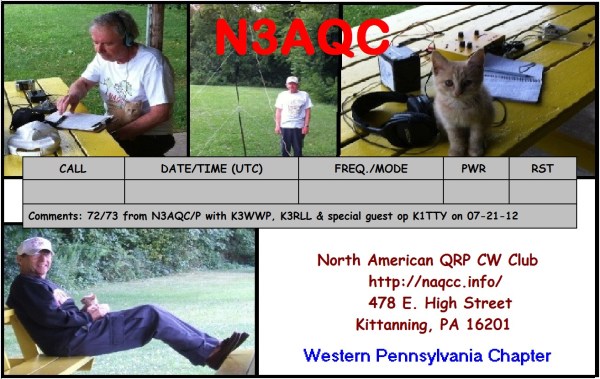 There was also a tentative (depending on weather) Parkpedition scheduled for the day this newsletter is released (August 10). We'll have details on that in the September newsletter. 5. NAQCC QRS NETS: 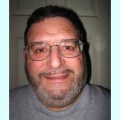 News and net reports in this section are from QRS Net Manager Craig N4PLK unless otherwise credited. Craig will handle all Net related material at this email address: Gary KS4JI had to resign suddenly as net manager for personal reasons. We're happy to have gotten a quick replacement in Craig N4PLK who has been doing an excellent job as NCS for our main Sunday evening net. We know he'll do an equally excellent job as our net manager. Recent NAQCC Net Activity Report Net Name (Abbreviation) Date (UTC) NCS No. Participants NAQCC Main QRS Net (NQN) - Sunday 7-15-12 N4PLK (NCS) -3- N4PLK N6TLU K1IEE 7-22-12 N4PLK (NCS) -12- N4PLK N8IUP N6TLU N4JD K3VIG K1IEE KU4GW NI9Y N9RLO K9EYT KB3CXQ VE3FUJ 7-29-12 N4PLK (NCS) -8- N4PLK N4JD N6TLU N9RLO VA3PEN K3VIG KA2CAQ W5BM 8-5-12 N4PLK (NCS) -9- N4PLK K3VIG N4JD N6TLU N8IUP N9RLO K1IEE KG0YR K9EYT NAQCC East Texas QRS Net (ETN) - Monday 7-23-12 KA5TJS (NCS) -5- KA5TJS KE5YUM KG0YR W5IQS KB0ETU 7-30-12 KA5TJS (NCS) -6- KA5TJS W5IQS KE5YGA W5BM K8QI KB0ETU 8-6-12 KA5TJS (NCS) -4- KA5TJS KE5YGA KE5YUM/P KG0YR NAQCC Pacific NorthWest QRS Net (PNW) - Thursday 6-21-12 KE7LKW (NCS) -2- KE7LKW WB4SPB 6-28-12 KE7LKW (NCS) -3- KE7LKW W7KXB N6KIX 7-5-12 KE7LKW (NCS) -3- KE7LKW W7KXB WB4SPB 7-12-12 KE7LKW (NCS) -5- KE7LKW WB4SPB N6KIX NU7T NXIP 7-19-12 KE7LKW (NCS) -2- KE7LKW WB4SPB 7-26-12 KE7LKW (NCS) -2- KE7LKW K7ZNP 8-2-12 KE7LKW (NCS) -3- KE7LKW WB4SPB K7ZNP NAQCC Rocky Mtn Regional/Continental QRS Net (RMR) - Tuesday 7-24-12 WC7S (NCS) -3- WC7S KG0YR KU79 7-31-12 WC7S (NCS) -4- WC7S N8IU K1IEE W3BBO 8-7-12 WC7S (NCN) -5- WC7S N4OLN N9ESE K0DTJ NAQCC Rocky Mtn Regional/Continental QRS Net (RMR) - Thursday 7-26-12 WC7S (NCS) -5- WC7S W4MPS AD7B N8IU K1IEE 8-3-12 WC7S (NCS) -0- No check-ins due to poor conditions NAQCC East Coast QRS Net (ECN) NoneFor more net info, see CW Assistance/QRS Nets on the web site. 6. NAQCC CW ASSISTANCE PROJECT:  Items in this section are from CW Assistance Project Coordinator Ron K5DUZ unless otherwise credited. If you are interested in helping out or need help with any CW and/or QRP matters contact: K5DUZ - The following explanation of Prosigns or Procedural Signals is courtesy of Allen, KA5TJS, member #4512. Allen is the NCS of the East Texas Net. Lets talk about these because they not only let the station you are talking to better understand your intent, they also let other stations know what you are doing. AR Stop Copying (End of Message) or after a call to a specific station KN Spacific Station Reply Example: TNX for the signal report Tom AR WA0AAA de KA5TJS KN The AR lets the station you are talking to know you are thru and the KN lets anyone who is listening know that you are turning it back to only the station specified. K Go or Over ( Any Station Reply) Example: CQ CQ CQ de KA5TJS K Often when I am tuning around, I will hear the last 2 or 3 letters of a call sign and K. I may send a ? or just send my call and a K. It may be his last call and he will move if he does not get a reply. I have waited too long and lost a QSO like that more than once. Plus, you don't know what you are getting. You might be suprised! BK Break Often used as a Back-to-You in a fast exchange when someone asked a question. SK End (End of Contact) Example: TNX for the QSO Tom 73 and CUL SK WA0AAA de KA5TJS AS Wait (Stand By) This is one you hear on nets a lot, but not in general QSOing. The proper use of these signals just makes life a little less hectic on the bands. Hope to work you soon. 73's Allen KA5TJS NOTE: You can see how a lot of the procedure signals above fit into a typical operating session here and here You can ALWAYS find a lot of CW information in our web site CW Assistance section here 7. CW CARTOON OF THE MONTH: 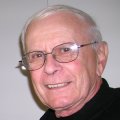 Let's take a comedy and/or nostalgia break now courtesy of Dick Sylvan W9CBT NAQCC #2062. Dick has been a long-time QRP/CW operator. One of his many talents is being a cartoon artist. Dick's cartoons appear monthly in the K9YA Telegraph, a free ham radio eZine, where he is staff cartoonist. The NAQCC is very honored to reprint Dick's cartoons originally published in the K9YA Telegraph. Dick has also authored a book entitled "Hi Hi - A Collection of Ham Radio Cartoons" available via his web site. A new cartoon has appeared in each of our even-numbered newsletters ever since their debut in Issue #058, November 17, 2007. Now with the change to a once-a-month publication, his cartoon will appear in every issue. 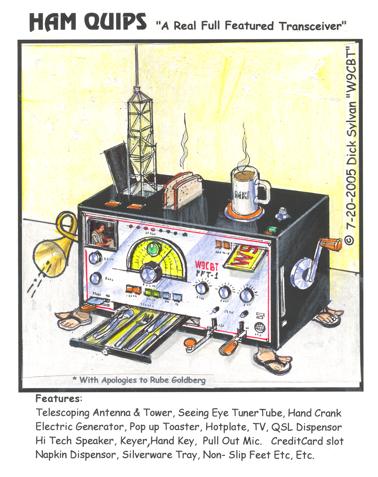 8. RECENT AWARD WINNERS: CERTIFICATES: Friendship Club 0013 N8ZYA - 6/13/12 0014 KC2EGL - 7/1/12 1000 MPW 0127 THROUGH 0143 N8ZYA - 6/10/12 (17 DIFFERENT AWARDS) KMPW 100 QSO-a-Day 2XQRP 500 PTS 0007 K9OSC - 6/10/12 30-30 0019 W2JEK - 7/27/12 Alphabet Prefix USA DXCC Category A (QRP) DXCC Category C (QRPp 50 countries) Suffix Words - SWA Category WAC Category A (QRP) 0021 WY7N - 7/4/12 WAS Category A WAS Category B (2X QRP) WAS Category C (QRPp) 0001 K3WWP 6/24/12 WAVE Category A ENDORSEMENTS and HONOR ROLL LISTINGS: Friendship Club 300 PTS KC2EGL - 7/1/12 400 PTS KC2EGL - 7/1/12 1100 PTS NW2K - 7/23/12 Alphabet Prefix World Alphabet Prefix USA KMPW 100 SWA Category KMPW 100 SWA/GAIN Category Suffix Words SWA WAC 15 METERS 0021 WY7N - 7/4/12 WAS CATEGORY C KH6 K3WWP - 6/24/12 KL7 K3WWP - 6/24/12 WAVE Congratulations to the above listed members for earning the above awards as well as to all who have earned our awards in the past almost eight years now. None of our awards are all that hard to earn with a little skill and a little effort and dedication. Personally I find working toward goals in ham radio is a great way to keep up my interest in this fine hobby and to keep me active on the CW bands to help in preserving this great mode. Our awards offer a means of providing goals to work toward. Every member should examine all our awards and pick out at least one, set a goal of earning the award, and do it. It will be a great feeling of accomplishment. Heartiest congratulations to John N8ZYA and Mike KC2EGL who recently became only the 13th and 14th members of our prestigious Friendship Club Award. When we conceived the idea of the FC Award with the purpose of making it different from other club's worked members award, we had no idea that it would become so prestigious. We figured, although with different requirements, it would still garner as many holders as those other clubs. That didn't turn out to be the case, and any one who earns the FC Award truly has a right to be proud of themselves. We certainly are proud of you. 9. MEMBER SPOTLIGHT:  This section is managed by Paul N8XMS and any questions about it should go to Paul Cope G4BNU #3217 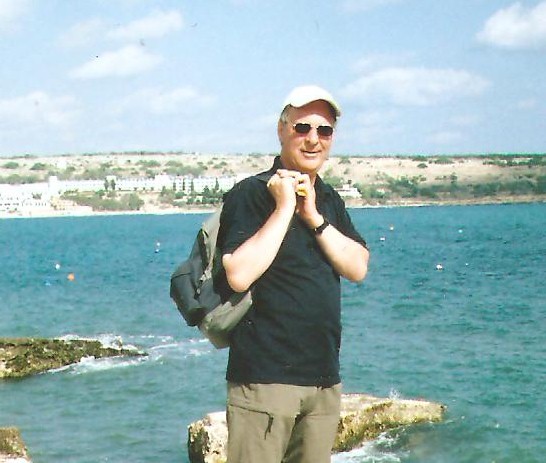 Hello to everyone, my name is Paul Cope. I live near the City of Newcastle On Tyne on the North East coast of the UK. Despite being across the pond I have connexions with the U.S. My brother has lived in Buffalo, NY for over 35 years, and my sister's daughter is resident in Oklahoma City. My interest in radio started around 1960/61 at 9 or 10 years of age when I began building crystals sets, and then moved on to one and two valve receivers, and later transistorised sets. I taught myself Morse after hearing local hams on 160 metres and finding I did not know what they were sending. Later I trained as merchant Navy radio Officer and passed out 4 days before my 18th birthday. A couple more months spent at college to obtain more qualifications and I was ready for sea going. (Or so I thought!) Marconi Marine were the biggest employers of R/O,s at the time, but having visited them I found their system to rigid for my free spirit and I went off as a freelance op. My first trip to sea was nearly my last and I had to send SOS in anger when the ship turned onto its side and sank in a few short minutes. Over 40 years later I still find this harrowing experience difficult to think about. Back to sea, this time for 5 years as a R/O on Ocean weather Ships in the N. Atlantic. These ships carried more radio gear than any other merchant or military ships. Only the soviet spy trawlers came near. Great for a would be ham. I was licensed in 1972 and did some /MM from WX ships. Most of my 40 years on the Ham Bands has been with CW and QRP. Lots of homebrew gear at different times and commercial and ex-military. At one time I could send and receive CW at 50 wpm. Back in 1997 I still managed 40 wpm to get a certificate from the Royal Naval Amateur Radio Society but now I am a 15 to 30 wpm man. Present rigs are Index Labs QRP +, its big brother the SGC SG-2020, an ex British SAS lightweight HF patrol rig from 1968, the A16 or Uk/PRC-316, which has 45 xtal controlled channels between 2mhz and 8mhz, a Collins 300hz filter inbuilt, and pushes out 3 or 4 watts. I also use a "paraset" Whaddon MK7 (homebrew, not an exact copy) crystal controlled TX, 4-5 Watts out with a regenerative 2 valve RX which works very well. I retired early last year and will have just put the 61st turn on my coil when you read this, I live with my wife Allison and two cats Sheba and Diego. Kids long since left the nest. I have lots more I could add but I do not want the reader yawning! My other interests include hiking/backpacking, general travel overseas, Industrial Archaeology, etc etc. 73 and take care Paul/G4BNU. 10. NEWS ITEMS AND ARTICLES BY OUR MEMBERS: 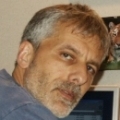 This section is a forum for you to tell other members what you've been up to on the ham bands or to submit an article dealing with some aspect of CW and QRP operation or equipment. Examples might include, but not limited to, antenna projects, QRP and/or SDR equipment, tuners, battery technology, keyers, logging, or other related topic of interest to the QRP community. Send your news items and articles to our news editor Paul KD2MX at BUILD YOUR OWN PADDLE FOR $0.00 Yes that's right -a paddle for $0.00. All you need is some ingenuity and a fairly well-stocked junk box. This is not going to be a blow by blow construction article with neat drawings and parts lists. Instead it will be a guide to using some ingenuity to construct a paddle from what you have on hand in your junk box. First of all, let's analyze just what a paddle is. Simply it's a pair of momentarily-on switches. One switch activates your keyer to send a single dot or a string of dots depending on how long you hold it closed. The other serves the same purpose for dashes. If your keyer is of the iambic style, holding both switches closed at the same time sends a string of alternating dots and dashes. The somewhat tricky part that requires some ingenuity is making the switches and creating some easy way to manipulate them. Generally the easiest way to do this is to connect a piece of metal to a lever of some sort to act as a moveable contact - one lever for dots and one for dashes. Then have another piece of metal as a common ground connection against which the contact on the levers mates to activate the keyer circuitry. Once you decide on that, you simply run wires from the paddle to the keyer. You need three wires, one for ground, one for the dots, and one for the dashes. Unless you have a well-equipped metal shop, it's much easier to use wood for the bulk of the paddle. Make two levers out of pieces of wood and connect your contacts to them. Mount them on a base of wood so that they pivot in such a manner that the contacts mate with whatever you choose for your ground contacts. Use some sort of spring to pull the contacts apart when you release the lever. The spacing between the contacts should be made adjustable so you can set it for a good 'feel' to the paddle. Now let's look at and dissect a paddle I made recently to further explain what I said above. 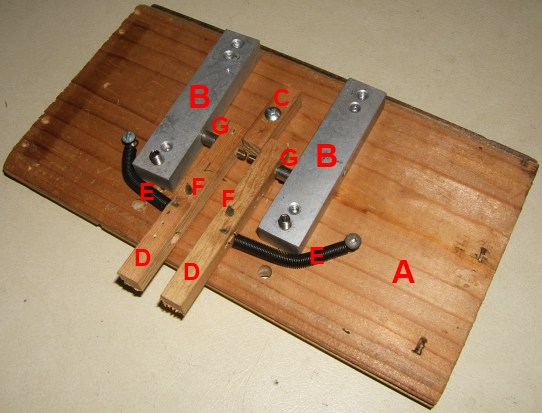 A - The base which was taken from some old piece of furniture years ago. B - Two pieces of metal used as the ground contact. They were taken from an old military surplus rig that two friends and I were going to make into a science project in high school. That's an interesting story, but this is not the place or time to tell it. C - A small block of wood that provides a stop for the levers (D) when they are at rest. It is from an old chest of drawers - the kind used for light storage and made from wooden frames covered with cardboard. The wood from the frames has provided me with material for many projects over the years. D - The paddle levers made from the same material as item C. E - Two springs to provide the tension on the levers. They are from an old typewriter. If you look closely, you'll see the end fits into a slot in D, and is secured by a tiny brad driven through the lever. They are bent around item B because originally I planned to make the paddle narrower. The other ends are just secured with a bolt driven into a threaded hole in the base. F - The pivots for the levers. You can see the points of nails there. They are from roofing nails driven up through the base fitted into a hole in the levers. Between the base and the levers are washers so the levers don't drag on the base. G - The moveable contacts. They are old bolts I had on hand that have small cylinders as their heads without any slots so they make supposedly good contacts, but more on that later. That's the basic prototype with still more work to be done. As you see however, it is just a matter of analyzing what you have on hand and how it can fit into the picture. There are an infinite number of variations that are possible depending on the material on hand. The idea is to make something that works without spending a small fortune on either an assembled/kit paddle or on parts to homebrew one. Anyone with a decent amount of junk and some ingenuity can easily build one. I tried it out using clip leads to connect the contacts to the corresponding points on my Bencher paddle. It worked pretty well in its first trials. One feature that may not be apparent at first glance, but will make sense when it is pointed out is the adjustment of the contact spacing. The ground bars (items D) are pivoted on a bolt through the base as seen protruding near the bottom ends. That means that a large movement of the far end results in a smaller movement at the contact point. Very tiny changes in contact spacing are possible, almost like the very finely threaded adjustments on my Begali paddle. That pretty much describes the paddle to this stage and should give a lot of food for thought if you want to design and build your own paddle someday. Of course, the paddle is not complete without some means of permanently attaching it to a keyer. So that was the next step, and along with that I made some other modifications as well to take us to this point. 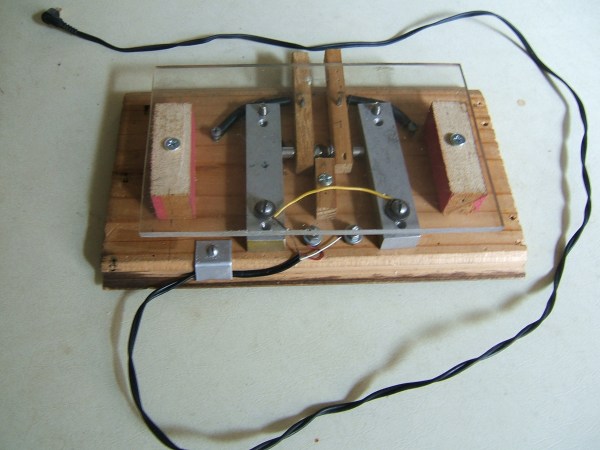 First of all notice the wiring. The two ground bars are connected together with the yellow wire and connected to the shield of the cable. Although not apparent in the picture, the dot and dash connections are connected to the contacts under a nut and washer then go down through the board and are routed to the connectors where you see the red and white wires from the cable. The cable again cost nothing as it is from an old pair of headphones that stopped working. Of course, obvious is the Plexiglas sheet mounted on two wooden blocks to cover the works of the paddle to keep debris off while out in the field working portable. Serendipitously it also serves another purpose as shown in the next picture here. 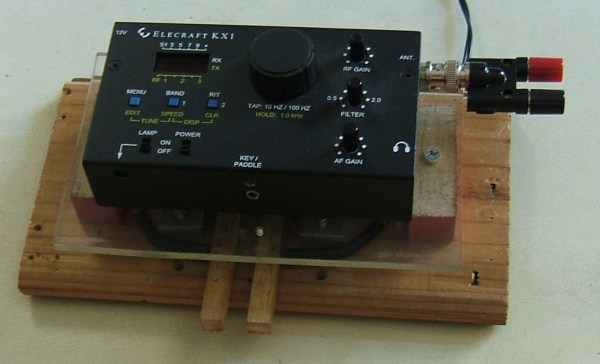 That's right - it makes a great little shelf for the KX-1. No planning there, it just worked out that way. One of those 'aha' moments, you might say. One problem surfaced with the paddle. The screws I used for the contacts would skip making contact now and then resulting in missing dots and dashes. It happened just often enough to send me to my junk box for a solution. I had a bunch of old relays there and thought I could use the contacts from one of them. I found just the thing. An old relay from something or other that had contacts about 1/4 inch in diameter and conveniently attached to an inch-long metal strip. I took the old contacts off the paddle, replaced them with a regular nut and bolt to hold the relay contacts on via a hole I drilled in the metal strip. I had to adjust the angle of the grounding bars to accommodate the change. I also enlarged the hole where the wires from the contacts went through the base to allow more freedom of movement from the altered position of the contacts. That will show up in the next picture, but first I want to describe another modification I made. Although the spring tension worked just fine at the permanent setting I had, I thought it would be a nice little perk to make the tension adjustable. I did that by again using a piece of the wood stock from which I made the levers, cutting a slot in it, fastening the end of the spring to it by the same method used to fasten the spring to the levers, and mounting it with a bolt through the slot into a tapped hole in the base. Now we have this which may or may not wind up being the very final version. 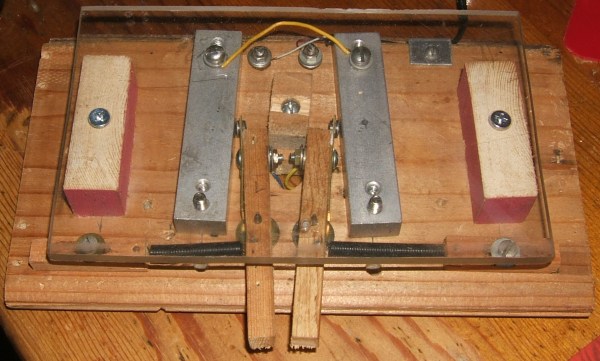 I find the action and feel of the paddle to be comparable to my Bencher and Begali paddles, even though they obviously look a lot better. I recently used it exclusively in the North American QSO Party to make 160 contacts, and it worked flawlessly with only a couple of operator errors along the way. For some reason I found it intuitively very easy to go from my keyboard where I was logging QSOs with GenLog to the paddle handles. Perhaps because the handles are lower than my other paddles. I'm not sure, it just felt great. To close now, here are a couple comments. The paddle is just heavy enough to stay firmly in place on my desk with just a couple short lengths of window weather stripping acting as feet. On our last Parkpedition, Don K3RLL said the paddle had a remarkably great feel for something made strictly from junk box parts. I'd like to challenge you to examine your junk box and see what you have there and try making your own paddle. Don't try to copy mine, but adapt what I said in this article to what you have on hand there. Let me know if you come up with something. It must be strictly a junk box project - no purchasing of parts. 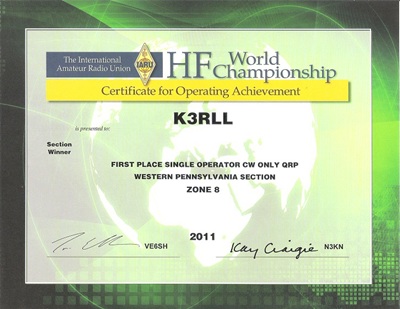 Receiving it was a total surprise to me. It is so nice to have an outside antenna here at the summer home in PA. An attic dipole is my mainstay in FL and this award wouldn't have happened there! My gear: FT-817 to G5RVjr. Mars Science Laboratory, Curiosity Rover vehicle tires have tread patterns that imprint the acronym JPL in Morse Code in the dusty soil of the Mars surface. The wheel tread pattern is made by square and rectangular holes in the wheels. When in motion riding around the sandy Gale Crater, this pattern is viewed by the driver using some of the 17 cameras aboard this interplanetary SUV. It takes about 14 minutes for radio waves to travel from the red planet to earth, through the Mars Odyssey orbiter relay satellite using UHF. Since there is a more than a 30 minute round trip delay between the driving commands and finding out the result of the measured moves, there is a need for the earth-bound drivers to maintain visual orientation and checks of distance traveled... this can be gauged by incremental count of the tread pattern repeats. Curiosity has 6 of these morse-coded wheels, and uses a rocker-bogie suspension, enabling it to climb obstacles. Who knows how many years these tread patterns will last on Mars? Perhaps when future Martian archaeologists study these strange fossil tread patterns a few hundred years from now, they will try to find someone studied in ancient radio lore to decode the meaning. My visit to ARRL Headquarters in Newington, CT. My XYL/Carla and I left on Saturday July 28th from Conyers, Ga about 25 miles east of Atlanta and stayed over night in Petersburg, VA south of Richmond. The next day we drove all the way up to Berlin, CT near Newington. Two nine-hour driving days. Berlin is about 10 miles from Newington. On Monday, I was in eager anticipation to get to headquarters early because the first tour of the facility is at 0900. We got there at 0830. I was envisioning a line waiting to get in but fortunately we were the only visitors and the first to be greeted. The ARRL really made us feel welcome and like family members at that. Our tour guide was Robert, NQ1R. He is in marketing. Very fine fellow. We really did get the grand tour. I recommend anyone to make the trip. The tour took about 45 minutes and then came the thrill of my lifetime, operating W1AW. The station manager Joe Carcin, NJ1Q set me up with a rig and had me all tuned up. I had a schedule with ham friends in Alabama on 40 meters but band conditions were not good so we QSY'd to 20 meters and that was much better. These fellows are friends and fellow members of the Bellringers who are active and retired Bell System employees. Nobody was waiting to use the station so we had an armchair QSO all to ourselves at 1000 watts. I know, we are a QRP club but OH BOY that was nice. When all was done NJ1Q made out a certificate that I operated W1AW. It is going to take some time for that glow to wear off. Hi Hi. Needless to say I had to document this visit so I took pictures to share. If you want to see, just go to http://www.flickr.com/photos/84446069@N08. | ||||||||||||||||||||||||||||||||||||||||||||||||||||||||||||||||||||||||||||||||||||||||
Club email address - The publication of our next newsletter will be announced via email to all members for whom we have a valid email address unless you specifically have unsubscribed from the email. Past on-line newsletters beginning with issue #042 are now archived on the site. So if you missed seeing any past issues, you can check them out in the archives indexed by Don K3RLL. Unless otherwise credited, all items are written by K3WWP. If you came directly to this newsletter, we invite you now to browse the NAQCC Web Site. | ||||||||||||||||||||||||||||||||||||||||||||||||||||||||||||||||||||||||||||||||||||||||